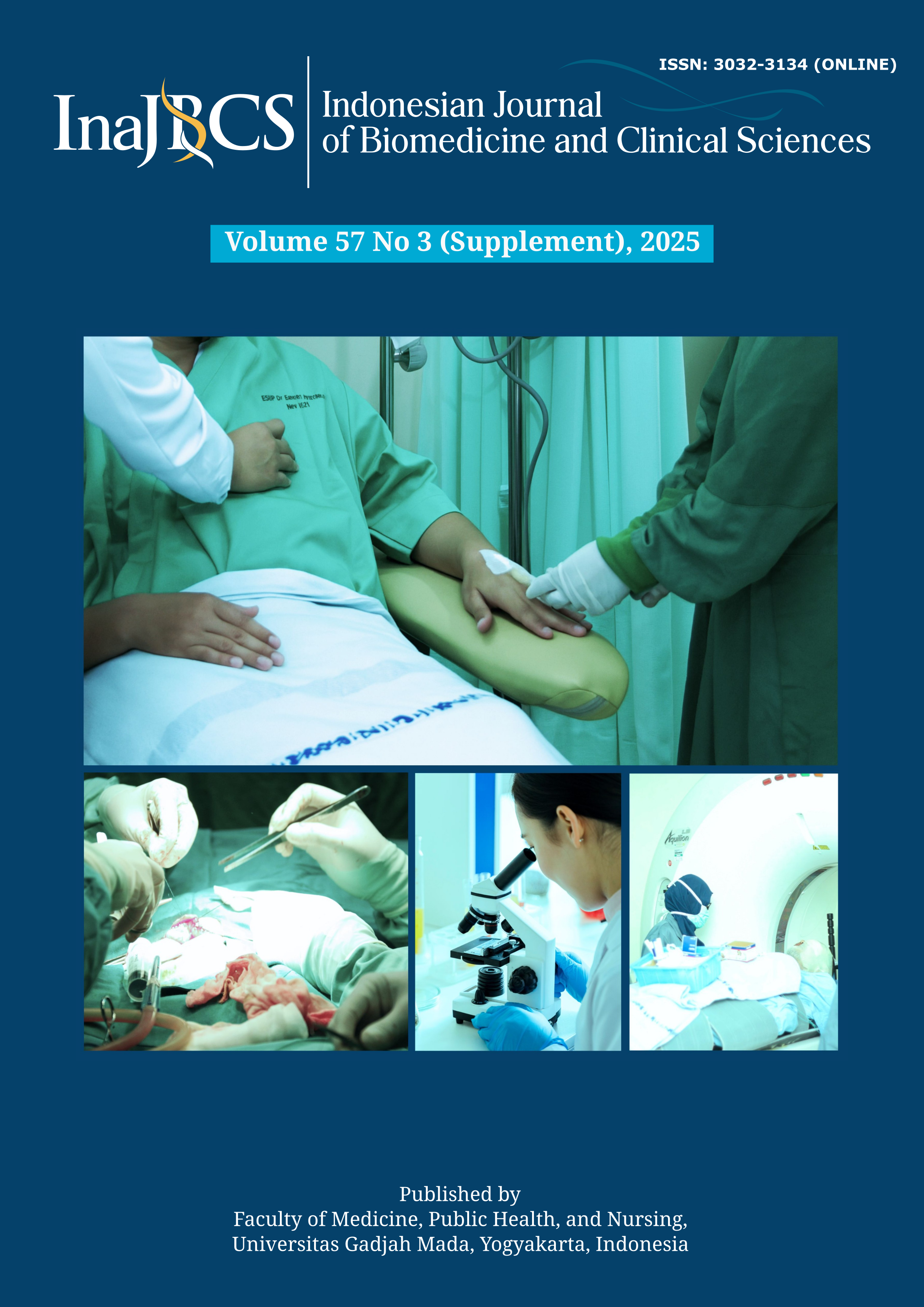A 31-year-old woman with type A medullary thymoma and myasthenia gravis
Abstract
Thymoma, also known as thymic epithelial tumor (TET), is a rare type of cancer originating from the epithelial cells of the thymic gland. Approximately one-third of thymoma patients develop myasthenia gravis (MG), predominantly associated with the cortical (type B) subtype. A 31-year-old woman presented to the hospital
with initial complaints of dyspnea, chest pain, hoarseness, dysphagia, and weight loss. In July 2024, she developed diplopia and left palpebral ptosis, and by September 2024, she was diagnosed with myasthenia gravis. Vital signs, physical examination, and laboratory findings were within normal limits. Thoracic CT
scan revealed an anterior mediastinal mass displacing mediastinal structures to the right, suspicious for thymoma, and biopsy and histopathological evaluation confirmed a type A thymoma. During hospitalization, the patient experienced respiratory failure necessitating ICU admission, endotracheal intubation, and
tracheostomy. Currently, clinical improvement is noted following treatment with pyridostigmine bromide 60 mg and chemotherapy. Thymoma is the most common epithelial neoplasm of the thymus found in the anterior mediastinum. It ranges from benign and may resemble thymic carcinoma or lymphoma in presentation.
Definitive diagnosis requires histopathological confirmation. Myasthenia gravis is an autoimmune disorder frequently associated with thymoma, characterized by autoantibodies targeting acetylcholine receptors (AChR) at the neuromuscular junction, causing fluctuating muscle weakness. Epidemiological data indicate that
around 15% of thymoma patients develop MG, whereas approximately 50% of MG patients harbor a thymoma. Prognosis and recovery depend on thymoma stage, therapeutic response, and MG severity. Relationship between thymoma and MG in this case involves autoimmune mechanisms where thymoma induces immune
dysregulation, promoting autoreactive T-cells and autoantibodies against AChR, disrupting neuromuscular transmission. Management of thymoma complicated by MG requires multimodal therapy, including thymectomy, immunosuppression, plasmapheresis, chemotherapy, and symptomatic treatment. This case of a
31-year-old female with medullary type A thymoma and MG was managed with a multimodal therapeutic approach including chemotherapy.






